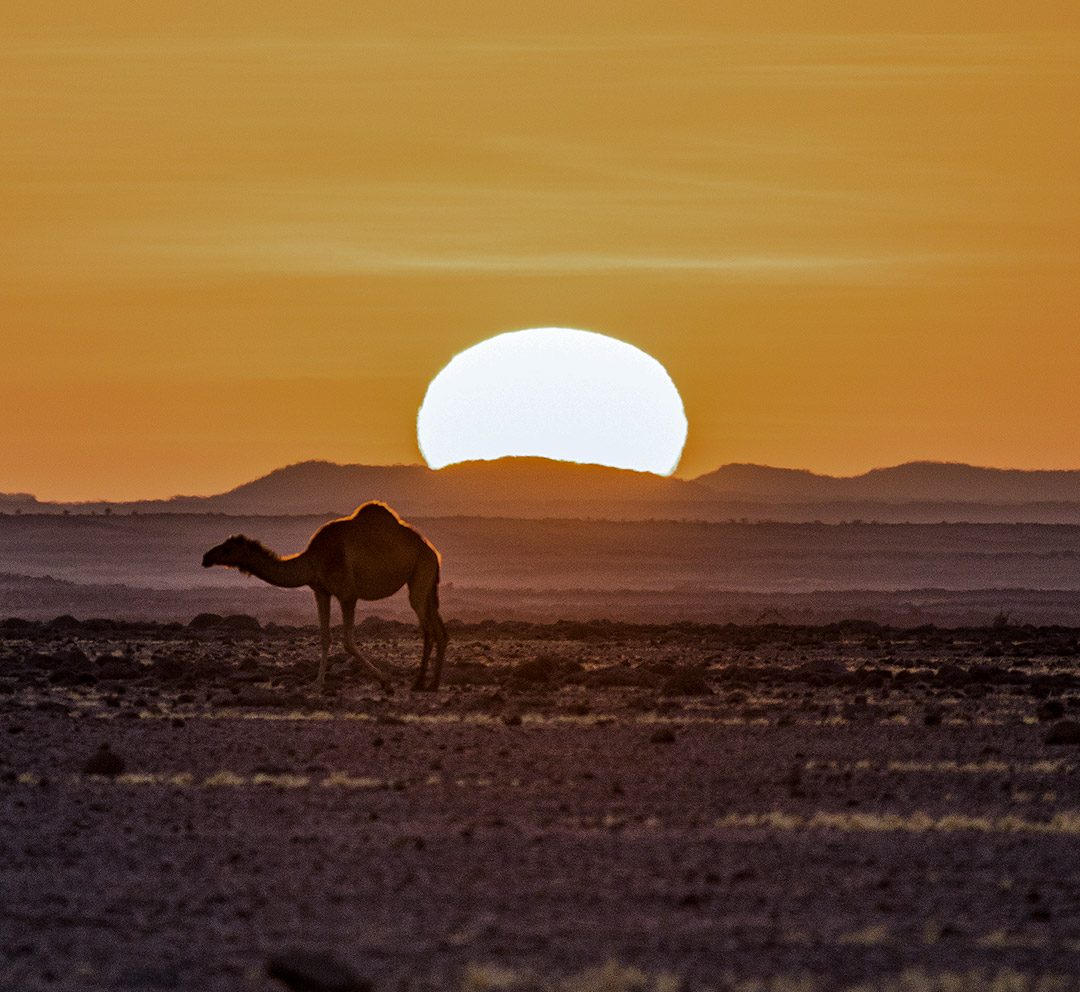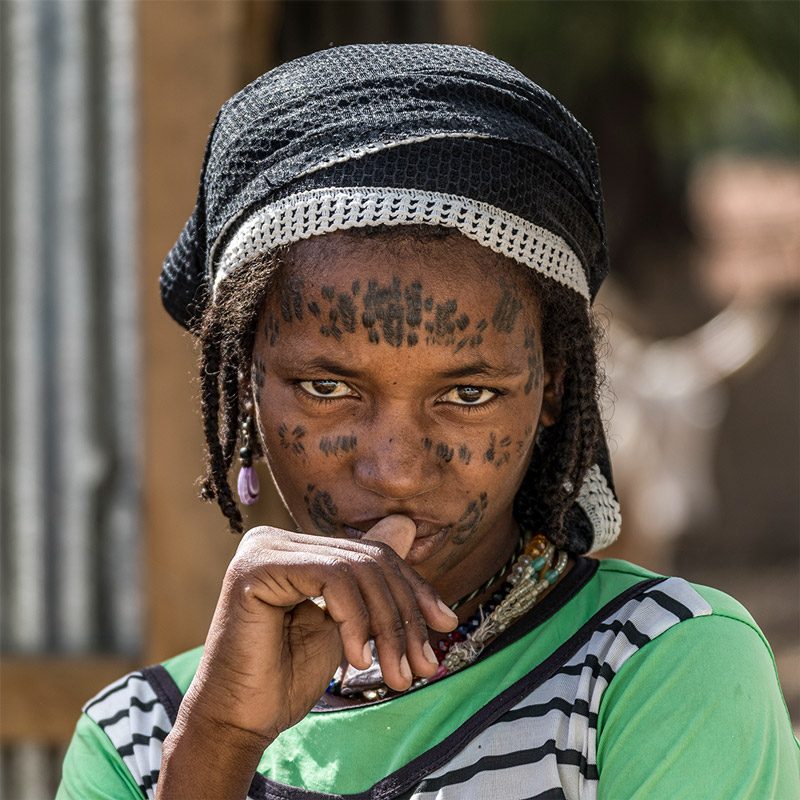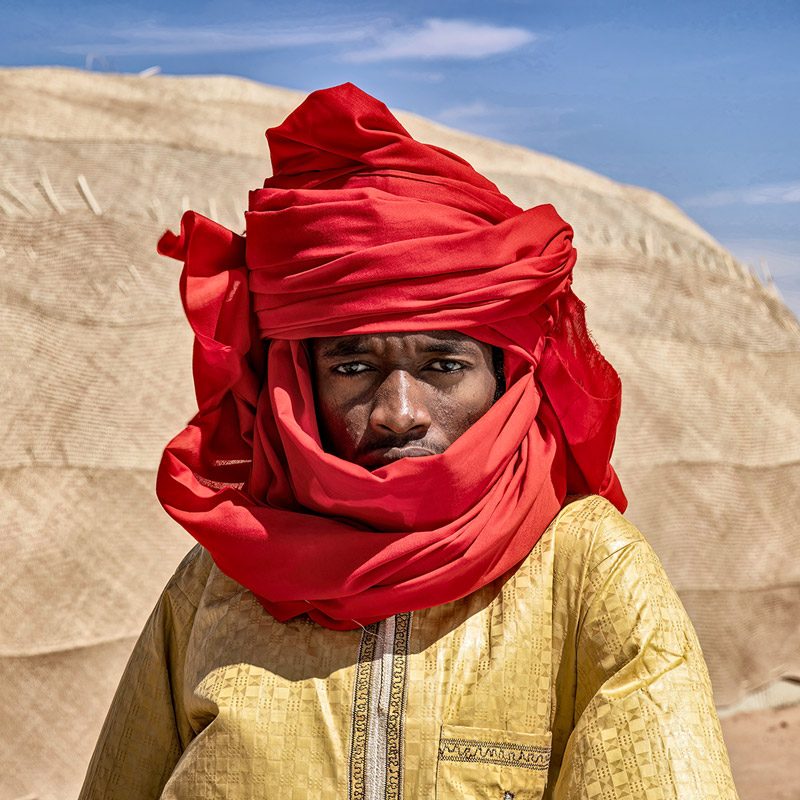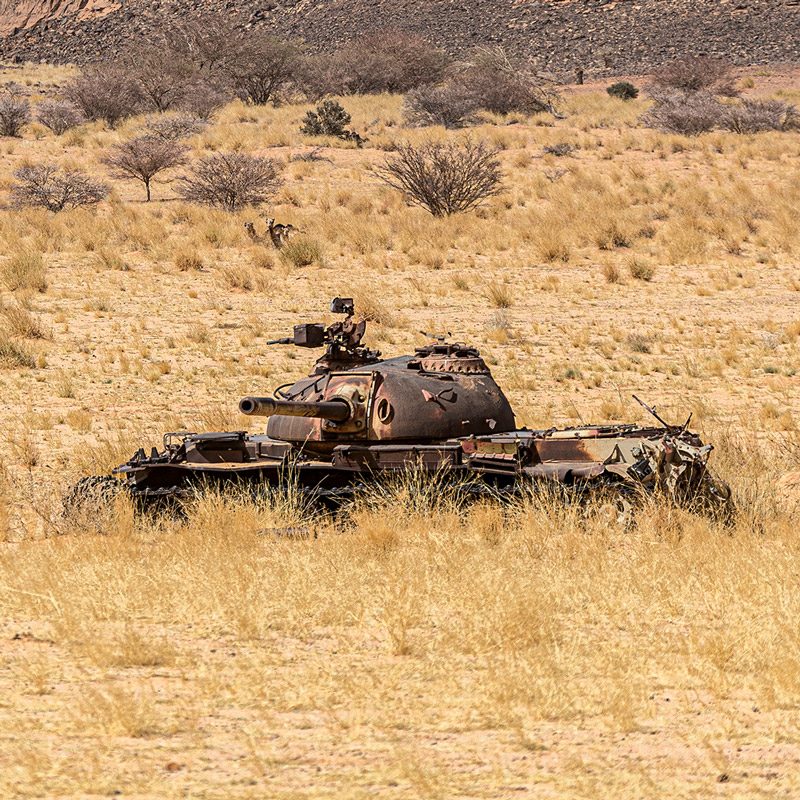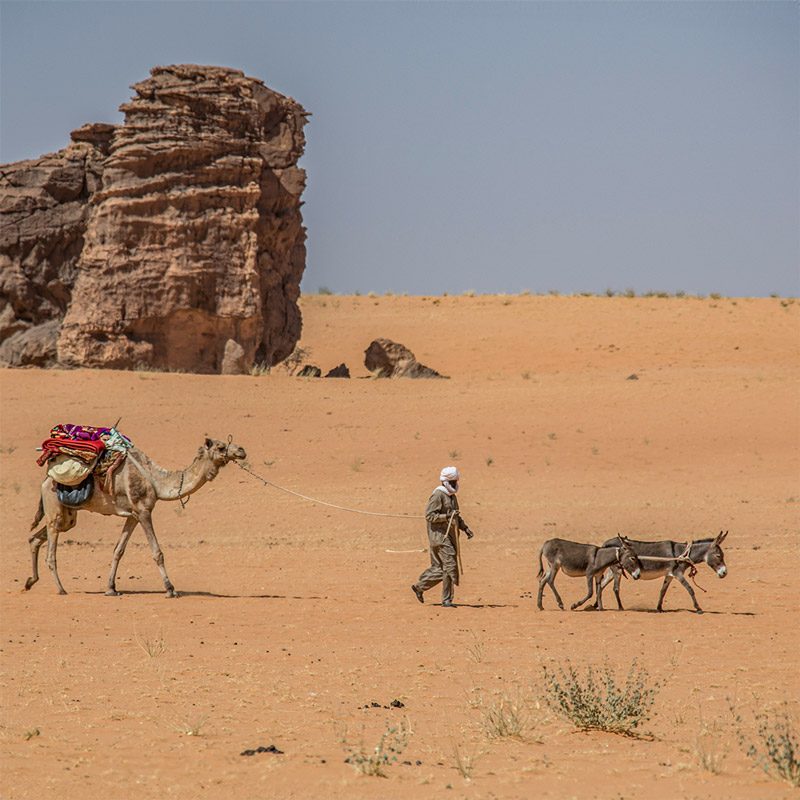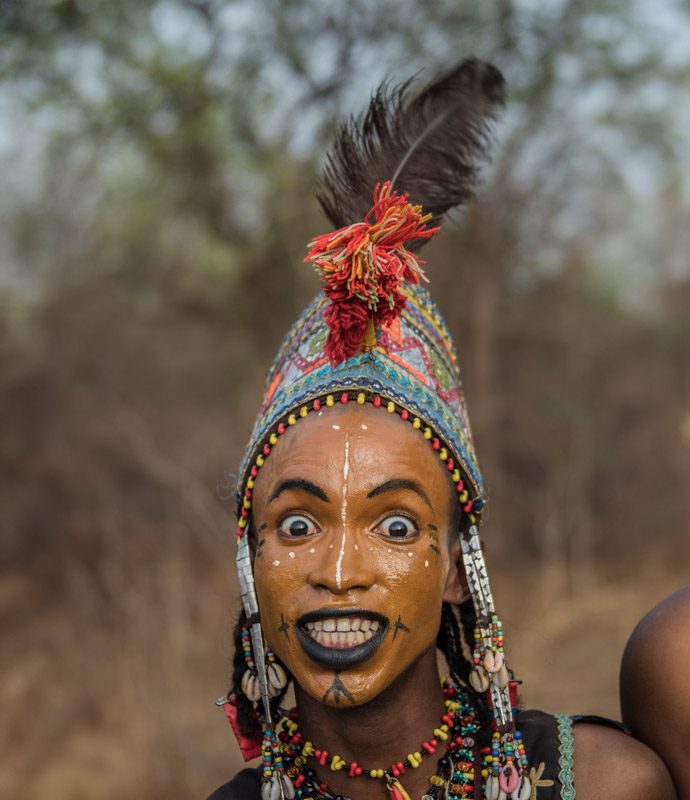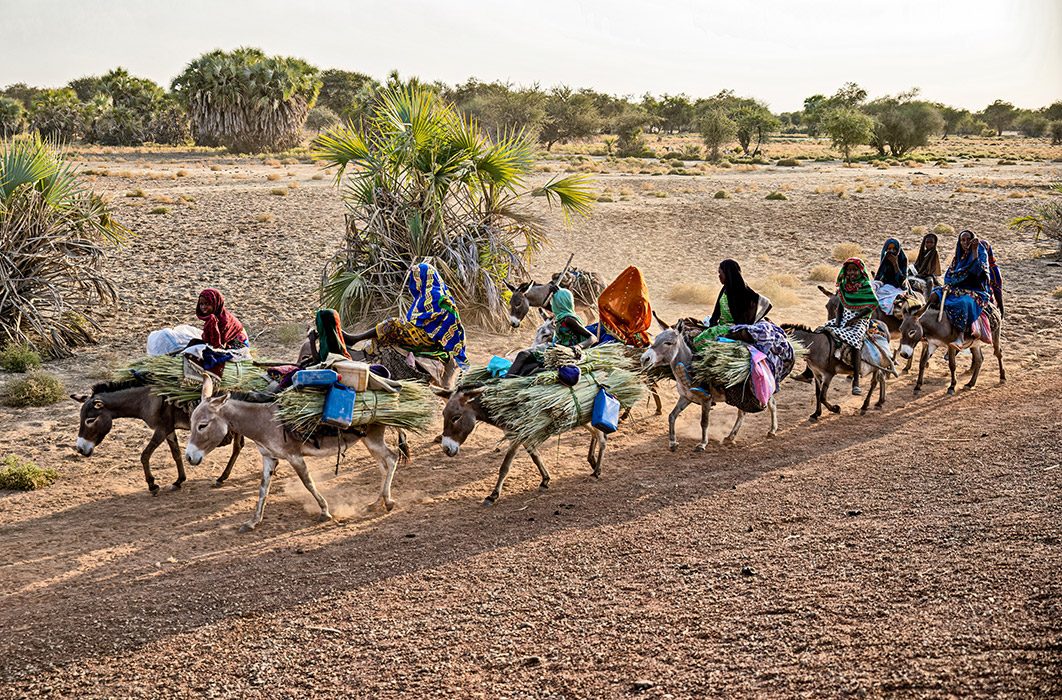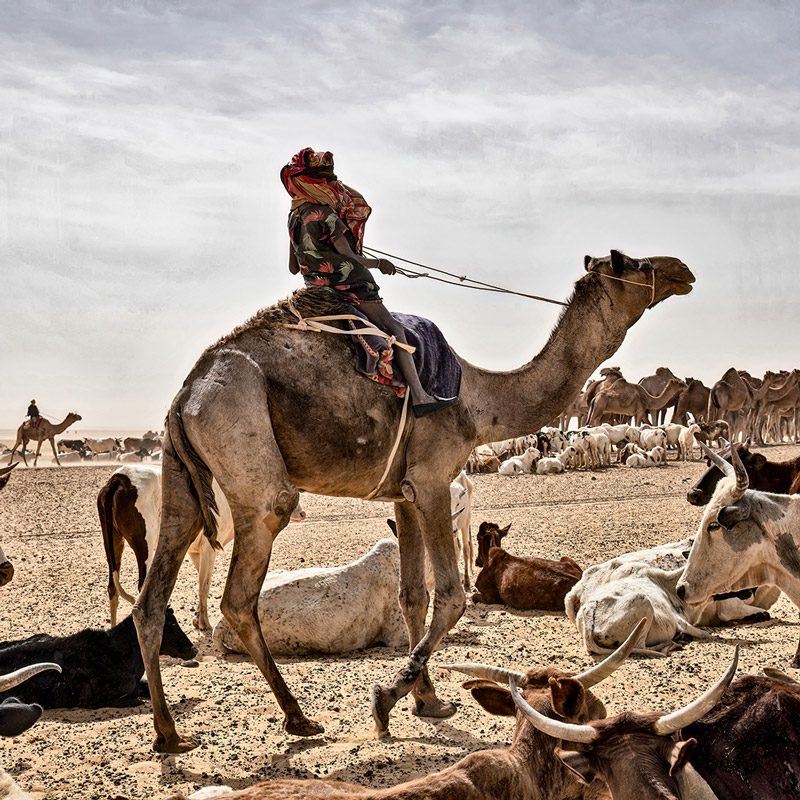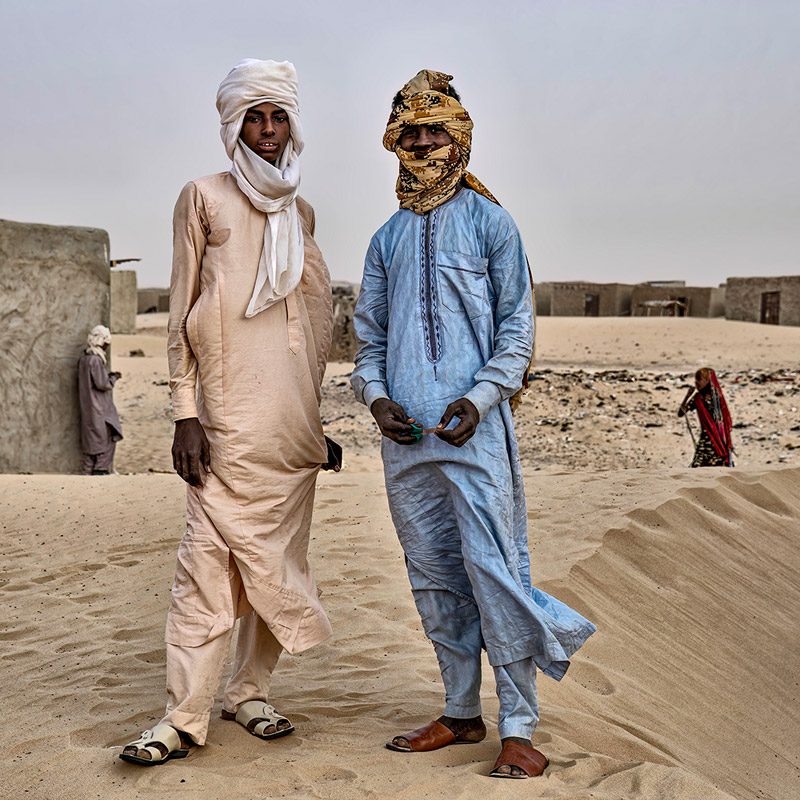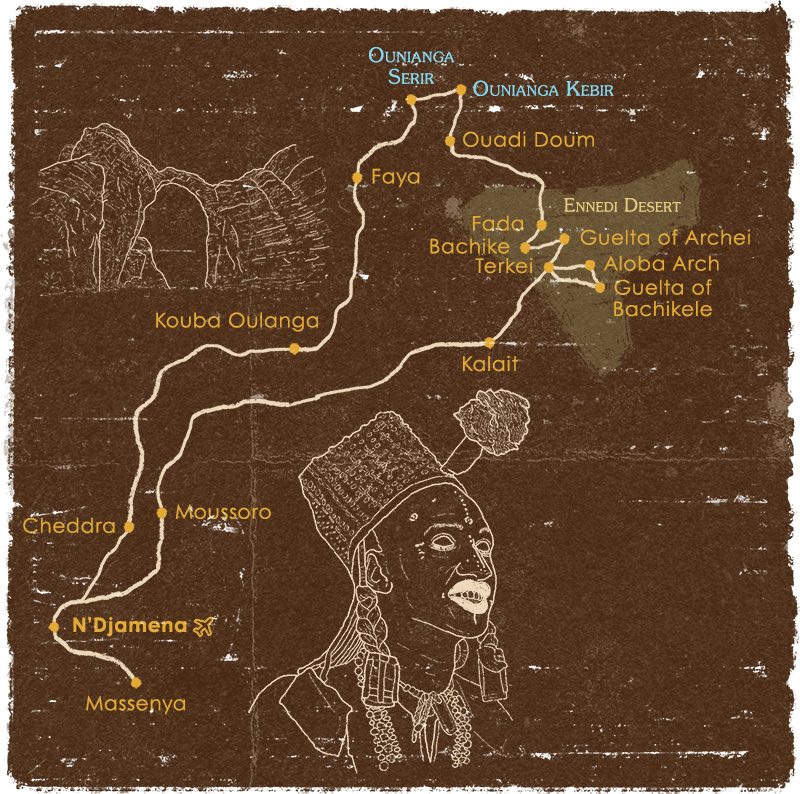Discover the highlights of this ethnographic trip to Chad
Gerewol Festival
On this ethnographic trip to Chad, we will have the privilege of experiencing the Gerewol Festival, as well as living with the Peul-Mbororo nomads, one of the most fascinating peoples of the African Sahel. During three days of celebrating the Gerewol ceremony, we will discover its culture and beautiful aesthetics. The goal of Gerewol is to unite the clans and, for Mbororo women, to find a partner. Men strive to attract women looking for a partner, and we can be there to enjoy and photograph this great moment.
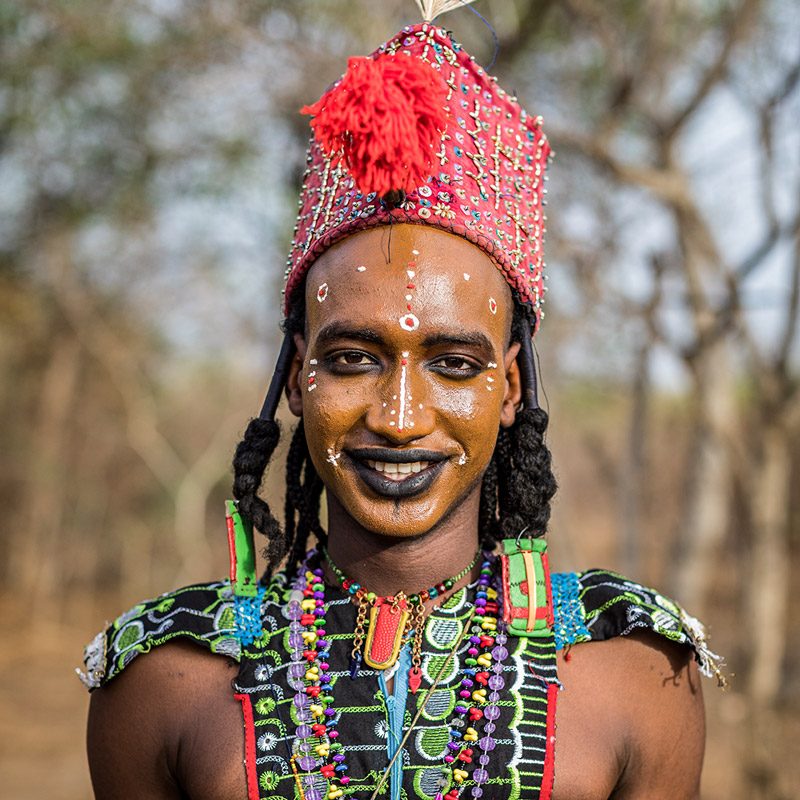
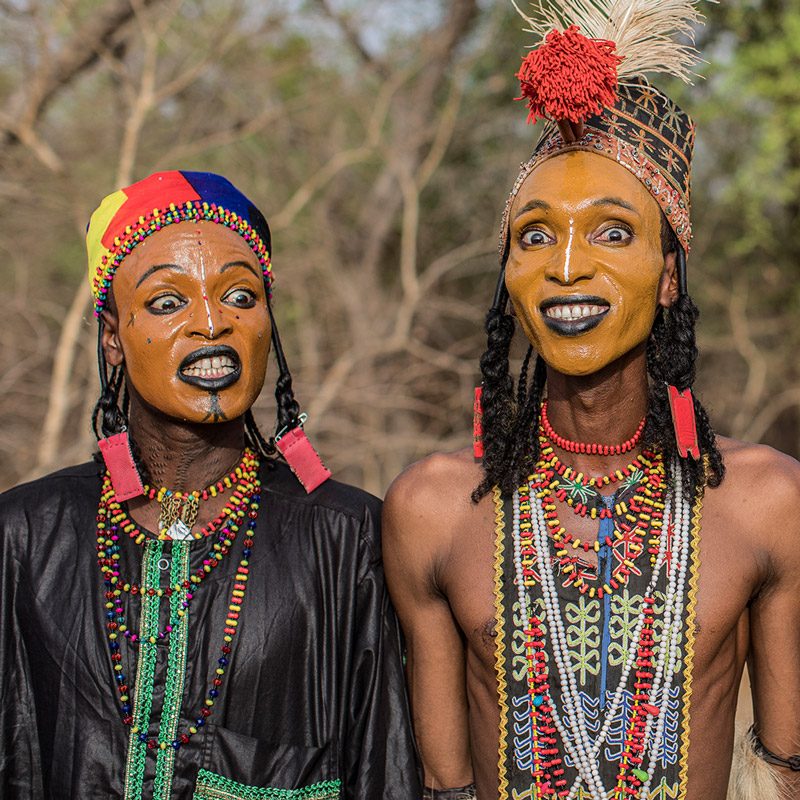
Ennedi Desert
The Ennedi desert is the most beautiful and spectacular in the great Sahara, with large rock formations and impressive paintings and rock engravings. Ennedi is a natural sandstone masterpiece spanning 50,000 km² of sculpted landscape marked by cliffs, natural arches, mushroom-shaped rocks and giant mazes. Nicknamed "Eden in the Sahara", the reserve is located within the Ennedi Massif, a mountainous refuge.
Mandigueli Rock with interesting cave paintings
Guelta of Bachikélé
It is a canyon located in a rocky massif, with a small permanent oasis where nomads take their dromedaries and other animals to drink.Julia Arch
A natural eroded sandstone arch, named after the wife of a French colonial administrator.Aloba Arch
This spectacular natural arch is the largest in Africa.Terkei cave paintings
Guelta d’Archei
This beautiful and magical place is the most emblematic of the Ennedi Desert. It is the refuge of the last colony of Nile crocodiles in the Sahara, where nomadic tribes come with their animals to benefit from the permanent source of fresh water.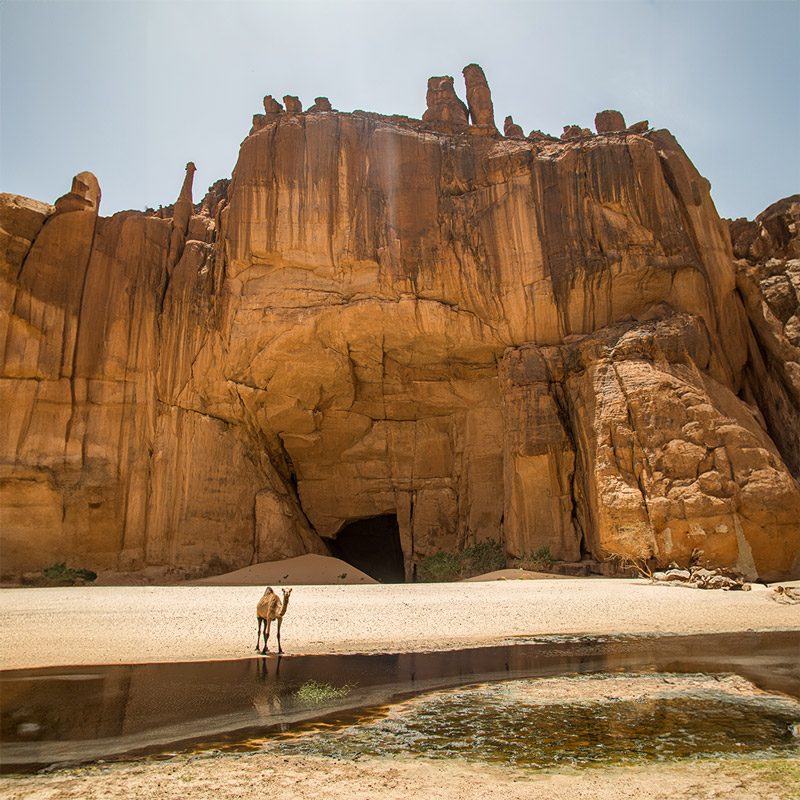
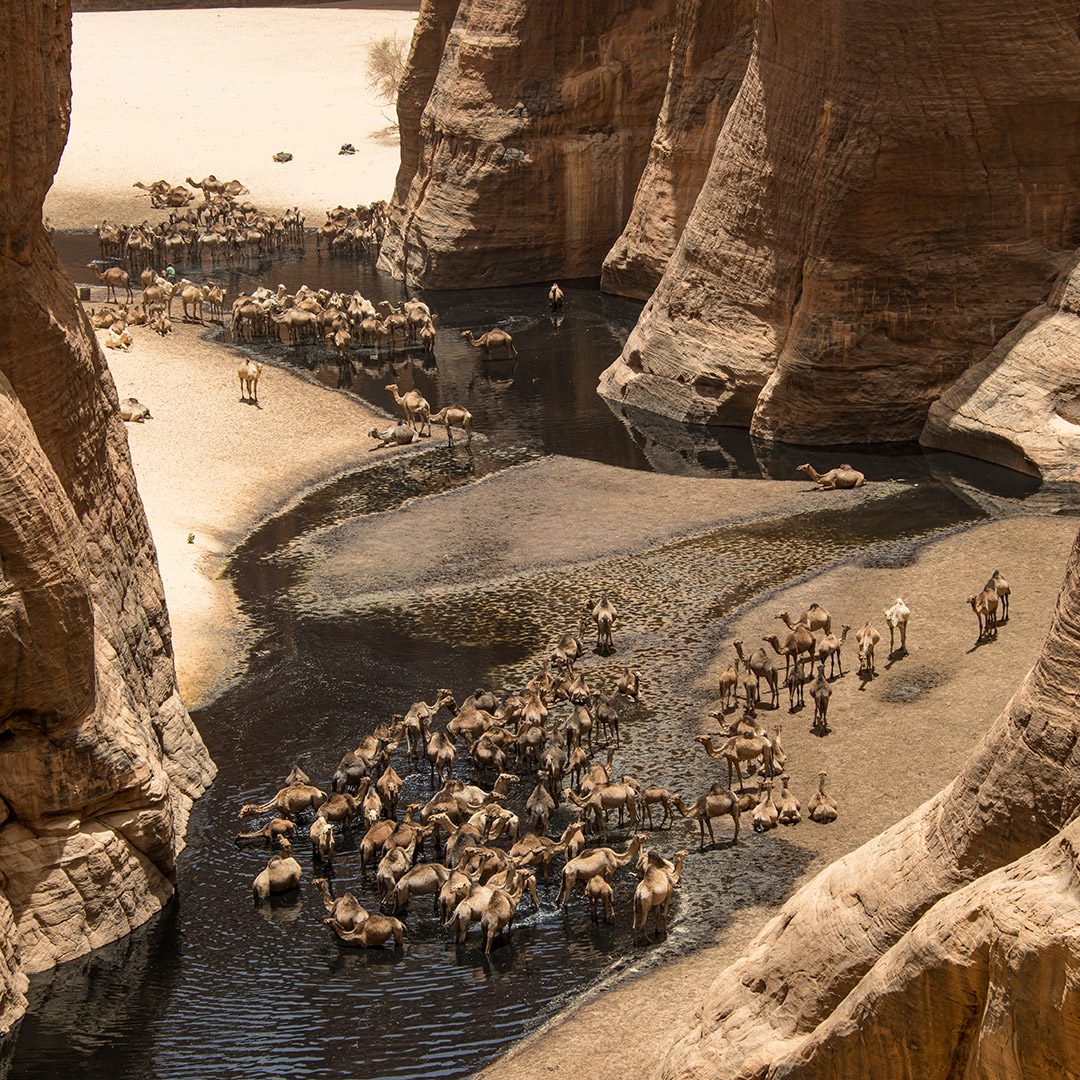
Oyo Labyrinth
Sandstone massif magnificently sculpted by erosion. This vast maze of rocks and pinnacles offers stunning views and is popular with climbing enthusiasts.Bachiké
It is a splendid canyon of reddish rocks where nomads dig wells in the watercourse for their animals. Also, it is the place where young nomads gather and dance.Wadi Wey Black Rock
Ounianga Lakes
Finally, after crossing the Ennedi Desert and the Mourdi Depression, this ethnographic trip to Chad will reach the Ounianga Lakes. These lakes offer an amazing view in the middle of the desert. Its different colors are due to the microorganisms found in its waters. Both Lake Ounianga Kebir and Lake Ounianga Serir have been declared World Heritage Sites since 2012. They are like Lake Chad, a relic of the Chadian floodplain which filled this part of the nowadays desert.Tank graveyard
On the way to the Wadi Doum Oasis, we will find the remains of the long Libya-Chad war (1978-1987) in the form of Russian tanks used by Gaddafi's army and destroyed by the Tubu soldiers, who were faster and more effective in their Toyota trucks granted by the United States government.We will meet the Toubou people
During this ethnographic trip to Chad, we will have the opportunity to meet the Toubou or Tubu people. Most of them don't even want to be photographed because of their beliefs and religion. We have to respect their choice. This will give us new opportunities to have contact with the local population and observe their way of life with their livestock around the water holes.
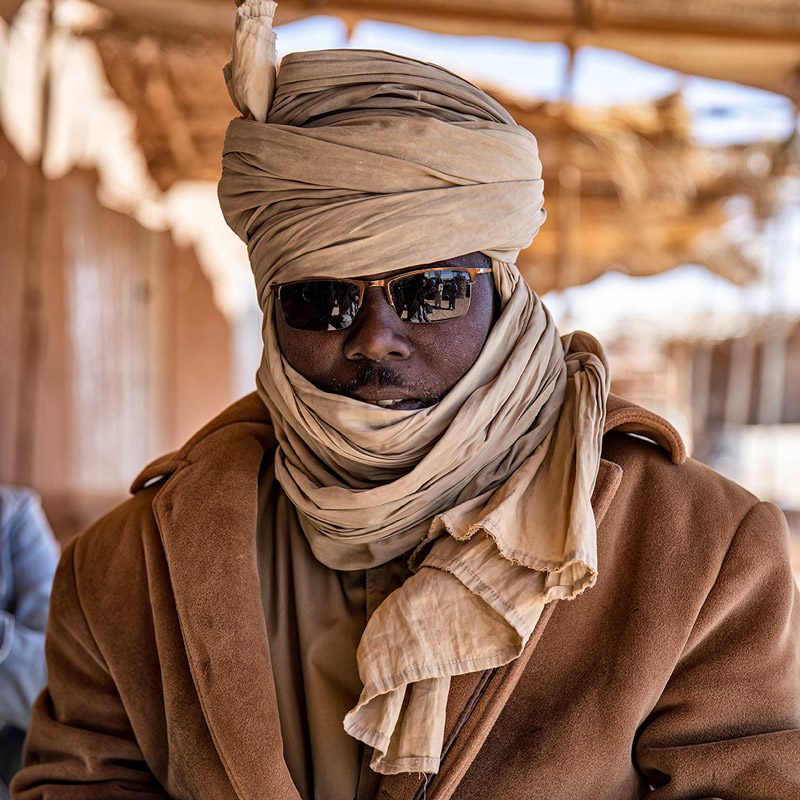

We will visit the settlements of the Baggara tribe
In the area between Massenya and N'Djamena, we will visit some settlements of the Baggara tribe, also known as 'Red Arabs'. The Baggara are a nomadic confederation of people of mixed Arab and indigenous Arabized African ancestry who inhabit a part of the Sahel, mainly between Lake Chad and the Nile River. They mostly speak their distinctive dialect, known as Chadian Arabic. They have a traditional way of subsistence, nomadic cattle herding, although today many tend to settle near villages and towns.
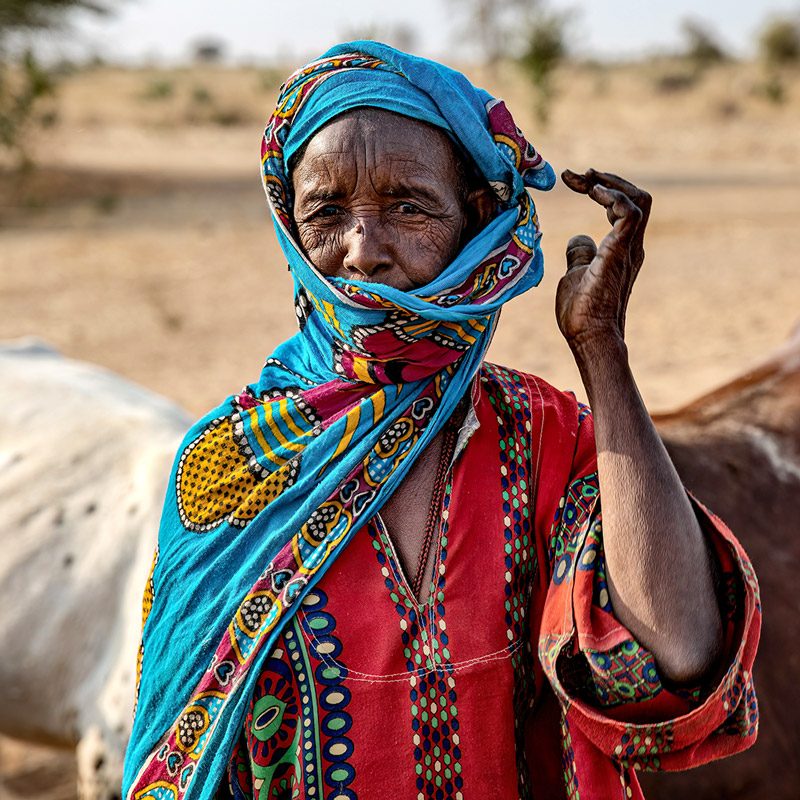
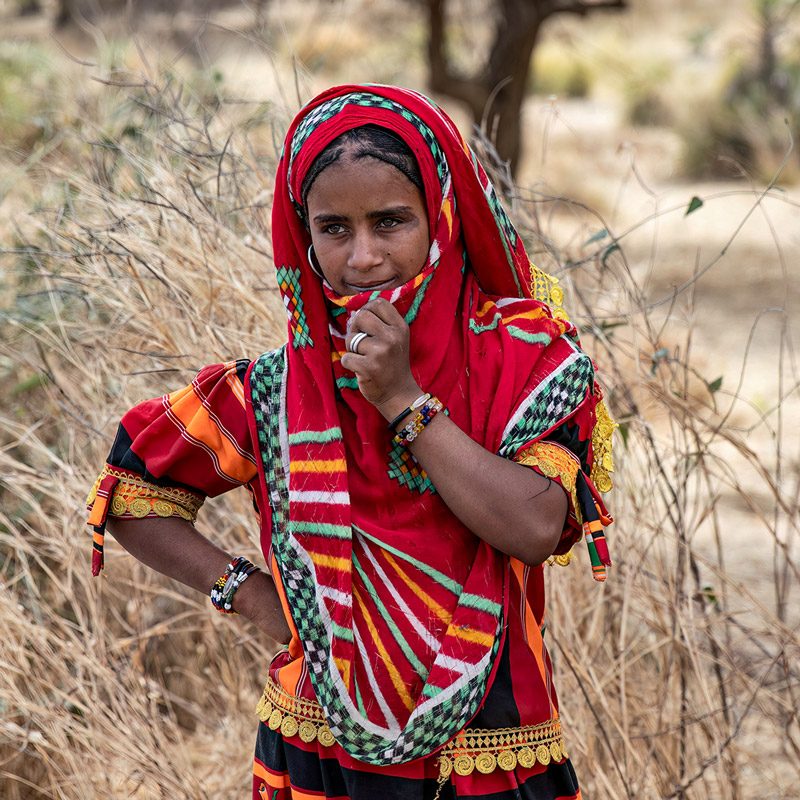
© Photos by Aníbal BuenoandJordi Zaragozà Anglès taken during an ethnographic trip to Chad.
► Download the itinerary for this ethnographic trip to Chad
Click on the button below to easily access the download form for the itinerary of this ethnographic trip to Chad.
